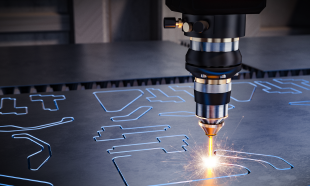Electronic ceramics are ceramic materials used in the electronic industry to prepare various electronic components. They are inorganic non-metallic materials that use artificially refined inorganic powders as raw materials, achieve specific properties through structural design, accurate chemical measurement, appropriate molding methods, and firing systems, and are processed to meet the requirements of design dimension accuracy.
Compared with traditional materials such as plastics and metals, ceramic materials have excellent properties such as high temperature resistance, wear resistance, corrosion resistance, light weight, etc. At present, they have been widely used in consumer electronics, aerospace, mechanical engineering, automotive parts, military, biomedical and other fields. With the rapid development of downstream applications, the electronic ceramic industry has maintained a steady growth in recent years. The global electronic ceramic market size was US $18.13 billion in 2010 and increased to US $20.59 billion in 2014. It is estimated that the global market space for new electronic ceramic materials is expected to reach 24.14 billion US dollars by 2019, with a compound annual growth rate of 3.2%.










